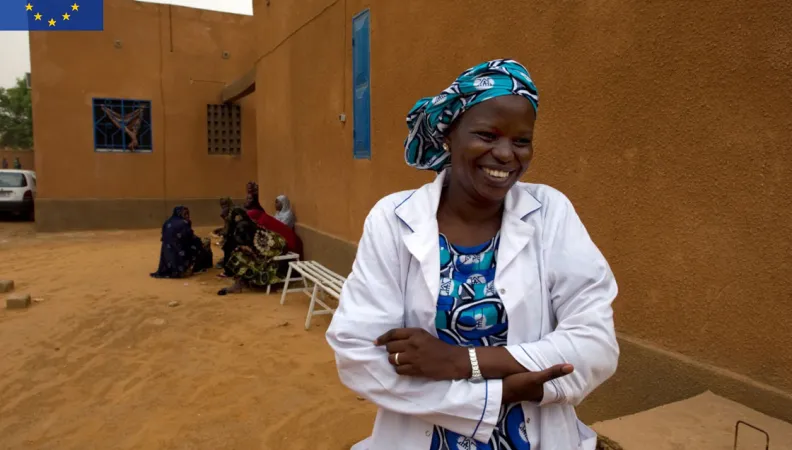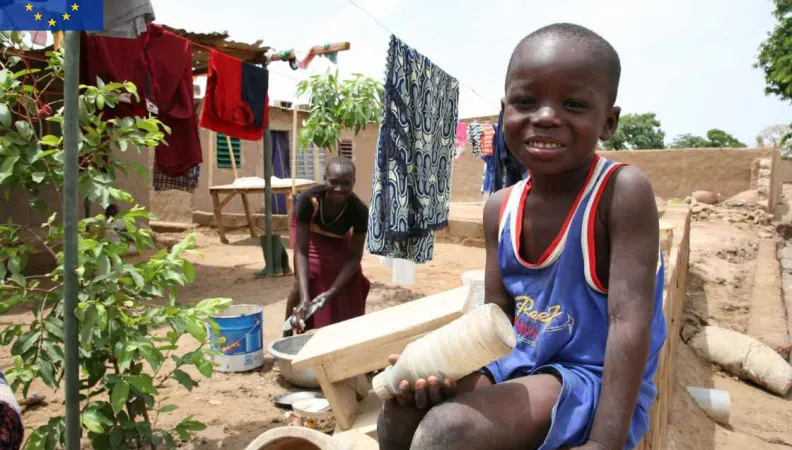 Legal notice EU (project) This research project examines the equity benefit of total health spending with particular focus on the recent Universal Health Coverage (UHC) reforms in Sub-Saharan Africa, by looking at the distributional incidence of health spending in three countries: Malawi, Zambia, and Burkina Faso. The research will shed light on the distributional incidence of total spending on health, public spending on health, and UHC-specific reform spending on health, looking both at individual beneficiaries and districts/facilities. The researchers involved in this project postulate that developing an analysis on two levels, individual beneficiaries and district/health facility, is highly innovative and can produce two parallel streams of findings, which, when pooled together, will offer a more comprehensive picture of the equitable or inequitable distributional incidence of the investments made in health.
Legal notice EU (project) This research project examines the equity benefit of total health spending with particular focus on the recent Universal Health Coverage (UHC) reforms in Sub-Saharan Africa, by looking at the distributional incidence of health spending in three countries: Malawi, Zambia, and Burkina Faso. The research will shed light on the distributional incidence of total spending on health, public spending on health, and UHC-specific reform spending on health, looking both at individual beneficiaries and districts/facilities. The researchers involved in this project postulate that developing an analysis on two levels, individual beneficiaries and district/health facility, is highly innovative and can produce two parallel streams of findings, which, when pooled together, will offer a more comprehensive picture of the equitable or inequitable distributional incidence of the investments made in health.
Contexte
The recent release of the Sustainable Development Goals reinforces the central role of health as a key element of human development, calling for further investments in health as part of a concerted effort to overcome poverty and inequalities worldwide. Specifically, SDG3 reiterates the importance of investing in policies that favor Universal Health Coverage (UHC), defined in relation to access to quality care and financial protection against the cost of illness. The urge to sustain and increase investments in health as part of an overall development policy is accompanied by the need to ensure that the investments made produce benefits for all groups in a society, contributing to reducing existing inequities in access and health status between the poor and the least poor. Evidence on the equity benefit of recent UHC reforms (ranging from user fee removal to results-based financing) is still limited. Similarly, evidence is lacking on whether investments in these recent reforms have altered spending on health at a national health, increasing the distributional incidence of this spending to benefit the poor rather than the least poor, as indicted by prior research.
This project is part of the first phase of the Research Facility on Inequalities, coordinated by AFD and funded by the European Commission's Directorate-General for International Partnerships over the 2017-2020 period. The first phase of the Facility has led to the conduct of 22 research projects and the publication of around 100 research papers and policy briefs.
Objectif
This project aims at assessing whether the distributional incidence of total and public spending on health has become more equitable over time, especially as a function of introducing UHC-specific reforms. The research objective is purposely set not only to describe the inequities in access and in health outcomes that may persist in spite of UHC-specific reforms, but also to explore more explicitly the link between the financial investments made and the benefits accrued across socio-economic groups. This choice stems from a wish to generate analytical evidence on the equity impact of the investments made in health, whether these investments are made by African countries themselves or with support from their development partners. The investigators trust that this evidence is much needed to direct and inform future investments in health. Moreover, keeping in mind this wish to inform policy making in a pragmatic manner, they plan to appraise their findings in the light of the different social and political circumstances that have shaped the emergence and implementation of the specific UHC policies and investments under analysis.
Méthode
The project expands the framework proposed by McIntyre and Ataguba published in 2011 and conducts a quasi-longitudinal benefit incidence analyses to assess the distributional incidence of total, public, and UHC-specific spending (such as user fee removal policies, targeted subsidies, or results-based financing) across all countries over time, measured both at the individual beneficiary level and at the district/health facility level. Traditionally, tables and concentration curves and indexes have been used to display the results of the Benefit Incidence Analysis (BIA). In addition to this traditional approach, the investigators plan to generate maps based on the BIA results to illustrate spatial inequities in the distributional incidence of spending on health.
Furthermore, they will appraise findings in the light of the specific circumstances within which policy decisions on health have been reached in each country, to be able to explain, from a qualitative point of view, what policy elements might have contributed to generate greater or smaller equity.
Results
You may find the research papers here:
- Estimating the distributional incidence of healthcare spending on curative health services in Sub-Saharan Africa: Benefit incidence analysis in Burkina Faso, Malawi and Zambia
- Estimating the distributional incidence of healthcare spending on maternal health services in Sub-Saharan Africa: Benefit incidence analysis in Burkina Faso, Malawi, and Zambia
- Distributional effects of healthcare spending : lessons from Burkina Faso, Malawi, and Zambia
- Assessing inequalities in healthcare spending in Burkina Faso, Malawi, and Zambia: data and methods
- Inequalities in Maternal Healthcare spending: Evidence from Burkina Faso
- Inequalities in healthcare spending on curative services: evidence from Burkina Faso
- Inequalities in maternal healthcare spending: evidence from Zambia
- Inequalities in healthcare spending on curative services: evidence from Zambia
- Inequalities in maternal healthcare spending: evidence from Malawi
- Inequalities in healthcare spending on curative services: evidence from Malawi
Contact:
Cecilia Poggi, Research Officer, AFD
 Legal notice EU (project) Burkina Faso has enjoyed relatively strong economic growth throughout the past ten years (more than 5% per year on average). Nevertheless, a non-negligible portion of the country’s population lives below the poverty line (40% in 2014). Thorough analysis is needed to better understand the many challenges posed by this level of inequality.
Legal notice EU (project) Burkina Faso has enjoyed relatively strong economic growth throughout the past ten years (more than 5% per year on average). Nevertheless, a non-negligible portion of the country’s population lives below the poverty line (40% in 2014). Thorough analysis is needed to better understand the many challenges posed by this level of inequality.
Context
Between 2007 and 2013, the average annual growth rate of Burkina Faso’s gross domestic product (GDP) was approximately 7% per year in real terms, representing one of the best economic performances in West Africa. If we take into account the country’s strong population growth, the average rate of per-capita GDP rose by 3% per year during this same period. Meanwhile, the poverty rate grew from 45% in 1994 to 47% in 2009. Despite signs of a decline (40% in 2014), considerable inequalities remain.
This project is part of the first phase of the Research Facility on Inequalities, coordinated by AFD and funded by the European Commission's Directorate-General for International Partnerships over the 2017-2020 period. The first phase of the Facility has led to the conduct of 22 research projects and the publication of around 100 research papers and policy briefs.
Goal
The initial objective of this research program on inequalities in Burkina Faso is to create an inequality diagnostic in the country. In a second phase, scientific studies will be carried out on three themes:
- The dynamics of inequalities and of multidimensional poverty;
- Educational trajectories; and
- What happens to graduates of the educational system.
The objective here is to examine how school graduates become integrated into society later, and to what degree they put into practice the skills acquired at school.
The research will mainly concern the cities of Ouagadougou and Nouna, in western Burkina Faso.
Method
The diagnostic on inequalities will take stock of the situation in Burkina Faso through a literature review and analysis of data from national surveys. The dynamics of inequalities and of multidimensional poverty in Burkina Faso will be understood through the experiences of one of the partners of this project, the Ouagadougou and Nouna Observatories. Analysis of trends in inequalities and in multidimensional poverty over time will be carried out in urban, semi-urban, and rural areas, according to the demographic, social, and economic characteristics of households and to the degrees of poverty. Research on the educational trajectories and on what has become of people having graduated from the educational system will use the same data. The idea is to monitor cohorts of school graduates to study their trajectories and their integration into the society in the longer term.
Results
This research will give rise to conferences and workshops. Various publications are also planned: a report, policy briefs, and research articles.
You may find the research papers here (in French) :
- Etat des lieux des inégalités multi-dimensionnelles au Burkina Faso
- Les inégalités au Burkina Faso à l'aune de la pandémie de la Covid-19: quelques réfléxions prospectives
- Dynamique des inégalités et de la pauvreté multi-dimensionnelle à Nouna
- Dynamique des inégalités de la pauvreté multi-dimensionnelle à Ouagadougou : données de l'Observatoire de population de Ouagadougou
You may also find the policy briefs:
- Meeting the equity challenge in Burkina Faso: regional policies to reduce economic inequalities
- Improving access to education in Burkina Faso: a major condition for benefiting from the demographic dividend
And the policy dialogue: Improving access to education in Burkina Faso: A major condition for benefiting from the demographic dividend
Contacts:
- Linda Zanfini, Research Officer, AFD
- Rohen d'Aiglepierre, Research Officer, AFD
